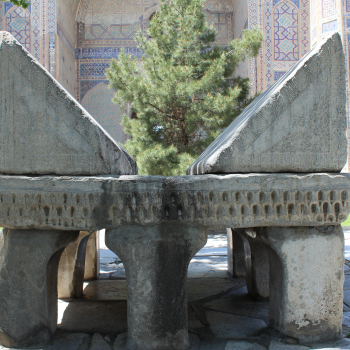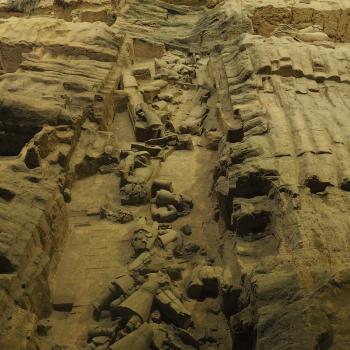Objects, including those found in the Fukinoki tomb in Nara, demonstrate the cultural and artistic influences that arrived in Japan via the Silk Road. The designs of dragons and phoenixes, which can be seen on gilt belt plaques, bear a striking resemblance to similar ones that have Scythian origins. Meanwhile a gilt bronze crown that was found there, is very similar to a crown discovered in North Afghanistan.
As a meeting point for travellers by land and sea routes, Thailand’s situation in Southeast Asia acted as a land bridge between the mainland to the north and the archipelagos to the south. Archaeological finds, including coins, ceramics, and beads provide evidence of cultural interactions, migration, and the settlement of a variety of ethnic groups. Indians were among the first visitors (by land), sharing trade links and spreading their faiths (Buddhism and Hinduism).
A great number of inscriptions have been discovered along the Silk Roads that followed the Hunza and Gilgit rivers, including thousands of petroglyphs on the banks of the Indus river. The dates of these rock carvings fall roughly into three periods – Pre-Buddhist, Buddhist, and Post-Buddhist. So far only one inscription has been published, which intimates that “Gu Wei-long, envoy of the Great Wei, (is) now dispatched to Mi-mi,” - the place of destination being probably modern-day Maimargh, a small country that was to the south of Samarkand.
The route of the Chinese section of the Silk Road has always varied during its long history. However, three key routes have been identified – the main line (starting in Xian and passing through to Wuquia, to the west of Kashi), and two other routes (both arriving eventually in Wuwei (Liangzhou). Apart from precise literary records, relics such as imported foreign coins (e.g. Byzantine, Sassanian and Arabian), gold- and silver-ware, decorations, glassware and Chinese silk all serve as tangible evidence of significant trade along these three routes.
Underwater archaeological sites and wreck sites provide important information on the history of nations and mankind. The Gulf of Siam is one such important site, having been a territorial waterway to and from the Malay Peninsula since the 4th and 5th centuries. Despite reasonably stable weather in the Gulf, conditions could be perilous. The number of shipwrecks to be found here, many of which are still intact owing to the relatively good underwater conditions that enable material objects to be preserved, reflects the risks.
During the second millennium B.C., Indo-European peoples, which were known archaeologically as the Andronovo culture, settled in Southern Kazakhstan. They left behind a rich repository of petroglyphs, which they carved into stone cliffs at their cultic centres. While petroglyphs can be difficult to date, because the stone had existed for millennia before being carved upon, the techniques used to carve the pictographs have assisted in the dating process.
The archaeological sites that are centered around Lumbini, Nepal, are unique because of their connections with the birth and life of the Lord Gautama Buddha. Up until the 1990s there had only been minor disturbances to some of the famous sites. However, with growing interest in Buddhism, the creation of a major pilgrimage centre at Lumbini and the uncontrolled development taking place in Nepal, the condition and the environment of these sites could change adversely in a very short space of time.







